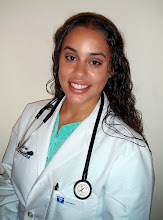By Julian Gonzalez
On March 3, 2011 MAPS traveled to Mount Sinai School of Medicine (MSSM) to check out some of the school’s state-of-the-art patient simulators. First, it needs to be said that MSSM is beautiful! There are a lot of windows with natural light, couches strewn about—it is simply gorgeous. Also, students at Mount Sinai get to live in the city, which is often a big priority on many medical school applicants’ lists of priorities, but back to the simulators!
At MSSM, we worked with current anesthesiology residents. They taught us how to insert a breathing tube into someone who required CPR through the use of real instruments and a mannequin. Although I did a better job choking the poor mannequin, we eventually all learned. The strange part was how rough you actually have to be to insert the tube. Also, as with anything in the human body, many things can do wrong such as the tongue blocking the airway, tearing the inner lining of the trachea, or simply forgetting to deflate the small balloon that initially keeps the tube in place. The mannequin was set up so that if proper intubation was complete, the lungs would inflate and deflate accordingly.
Next, we practiced placing an intravenous line into a thin plastic tube to simulate phlebotomy of real human blood vessels. Again, I practically killed my patient but the good news is I’m not yet a physician! Though I hope it never happens once I become a physician, I can see why it is hard to stick someone who is donating blood (a scenario that as a donator, I know all too well). I tip my hat to my fellow MAPS members who successfully placed a line on the first try! It took me six times—yikes!
Lastly, we worked with the full body patient simulator. It was simply amazing to say the least. The patient simulator is essentially a full-body mannequin with a pulse, body temperature and other real vital signs. It can be hooked up to the real machines that are used in hospitals such as an O2 Saturation reader, EKG machine, pulse monitor, and can event respond to injections of various drugs. The simulator detects all the medicine, and can have the expected or adverse effects. Furthermore, you can see and sense many other details of the simulator, such as body temperature increasing or decreasing by touching the skin, seeing the pupils dilate or constrict based on illness, and see the diaphragm descend or ascend as it breathes. The simulator was extremely life-like. This taste of what medical students and physicians do makes me even more eager to start medical school!

No comments:
Post a Comment